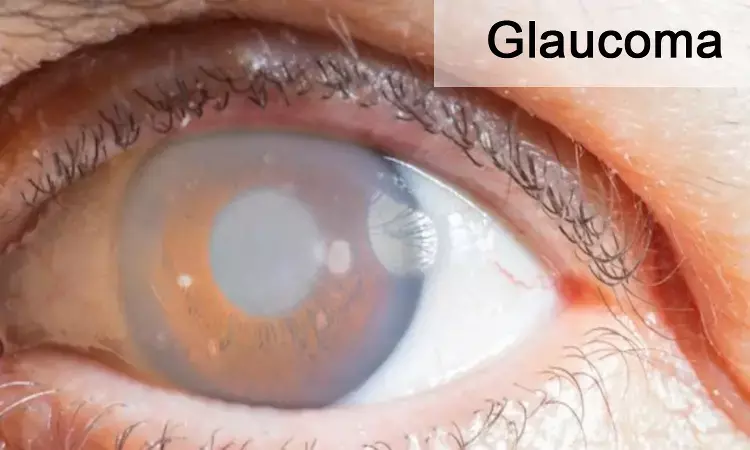- Home
- Medical news & Guidelines
- Anesthesiology
- Cardiology and CTVS
- Critical Care
- Dentistry
- Dermatology
- Diabetes and Endocrinology
- ENT
- Gastroenterology
- Medicine
- Nephrology
- Neurology
- Obstretics-Gynaecology
- Oncology
- Ophthalmology
- Orthopaedics
- Pediatrics-Neonatology
- Psychiatry
- Pulmonology
- Radiology
- Surgery
- Urology
- Laboratory Medicine
- Diet
- Nursing
- Paramedical
- Physiotherapy
- Health news
- Fact Check
- Bone Health Fact Check
- Brain Health Fact Check
- Cancer Related Fact Check
- Child Care Fact Check
- Dental and oral health fact check
- Diabetes and metabolic health fact check
- Diet and Nutrition Fact Check
- Eye and ENT Care Fact Check
- Fitness fact check
- Gut health fact check
- Heart health fact check
- Kidney health fact check
- Medical education fact check
- Men's health fact check
- Respiratory fact check
- Skin and hair care fact check
- Vaccine and Immunization fact check
- Women's health fact check
- AYUSH
- State News
- Andaman and Nicobar Islands
- Andhra Pradesh
- Arunachal Pradesh
- Assam
- Bihar
- Chandigarh
- Chattisgarh
- Dadra and Nagar Haveli
- Daman and Diu
- Delhi
- Goa
- Gujarat
- Haryana
- Himachal Pradesh
- Jammu & Kashmir
- Jharkhand
- Karnataka
- Kerala
- Ladakh
- Lakshadweep
- Madhya Pradesh
- Maharashtra
- Manipur
- Meghalaya
- Mizoram
- Nagaland
- Odisha
- Puducherry
- Punjab
- Rajasthan
- Sikkim
- Tamil Nadu
- Telangana
- Tripura
- Uttar Pradesh
- Uttrakhand
- West Bengal
- Medical Education
- Industry
Glaucoma Associated with Cytomegalovirus Corneal Endotheliitis: Clinical Features

Cytomegalovirus (CMV), a member of the human herpesvirus family, often causes recurrent ocular inflammation of the anterior segment in immunocompetent patients, including corneal endotheliitis, iris atrophy, and anterior uveitis.
CMV corneal endotheliitis characterized by corneal edema, linear or circular keratic precipitates (KPs), and mild anterior chamber reaction. It sometimes accompanies intraocular pressure (IOP) elevation. Polymerase chain reaction (PCR) of aqueous humor samples is helpful in confirming the diagnosis. Previous studies have demonstrated the efficacy of treatment with topical ganciclovir (GCV) and systemic anti-CMV agent. In some cases, endothelial decompensation occurs, that may require endothelial keratoplasty. Also, persistent IOP elevation require glaucoma surgery.
The purpose of this study by Mori et al was to highlight manifestations of glaucoma associated with CMV corneal endotheliitis. They paid special attention to glaucoma status, including the onset of glaucoma, glaucoma in the fellow eye, visual field defects, intraocular pressure, and final outcomes. Case series revealed that most of the patients with CMV corneal endotheliitis had glaucoma.
Authors reviewed the 34 patients that met the diagnostic criteria for CMV endotheliitis in hospital, with special attention to the glaucoma status, including onset of glaucoma, glaucoma in the fellow eye, visual field defects, intraocular pressure, and final outcomes.
- Thirty-four eyes of 34 patients with CMV corneal endothelitis were enrolled.
- Thirty-two eyes (94.1%) had a history of a glaucoma diagnosis, which had been treated for 10.0 ± 10.1 years.
- Glaucoma in the fellow eye was noted in 16 cases (47.1%) and a history of Posner-Schlossman syndrome was noted in 13 cases (38.2%).
- Visual fields measured using a Humphrey field analyzer were normal-to-early stage (MD>-6dB) in 16 eyes (47.1%) and middle-to-late stage (MD≤-6dB) in 18 eyes (52.9%).
- The intraocular pressure decreased from 22.4 ± 10.6 mmHg at the initial visit to 14.9 ± 7.9 mmHg after medical treatment, including 0.5% topical ganciclovir (GCV) with and without a systemic anti-CMV agent, corticosteroid eye drops, and an anti-glaucoma agent (p<0.01). During the follow-up period of 4.8 ± 3.0 years (range, 0.2–10 years), 16 eyes (47.1%) required glaucoma surgery, including filtering surgery (7 eyes) and trabeculotomy only (9 eyes).><0.01).
- During the follow-up period of 4.8 ± 3.0 years (range, 0.2–10 years), 16 eyes (47.1%) required glaucoma surgery, including filtering surgery (7 eyes) and trabeculotomy only (9 eyes).
"In conclusion, our case series revealed that most of the patients with CMV corneal endotheliitis had glaucoma. Although medical therapy, including 0.5% topical GCV, was effective in reducing the IOP, one-half of the patients required glaucoma surgery. Therefore, ophthalmologists should strive to establish a timely diagnosis of CMV corneal endotheliitis by PCR testing of aqueous humor samples to prevent sight-threatening glaucomatous damage."
Source: Mori et al; Clinical Ophthalmology 2022:16
https://doi.org/10.2147/OPTH.S376039
Dr Ishan Kataria has done his MBBS from Medical College Bijapur and MS in Ophthalmology from Dr Vasant Rao Pawar Medical College, Nasik. Post completing MD, he pursuid Anterior Segment Fellowship from Sankara Eye Hospital and worked as a competent phaco and anterior segment consultant surgeon in a trust hospital in Bathinda for 2 years.He is currently pursuing Fellowship in Vitreo-Retina at Dr Sohan Singh Eye hospital Amritsar and is actively involved in various research activities under the guidance of the faculty.
Dr Kamal Kant Kohli-MBBS, DTCD- a chest specialist with more than 30 years of practice and a flair for writing clinical articles, Dr Kamal Kant Kohli joined Medical Dialogues as a Chief Editor of Medical News. Besides writing articles, as an editor, he proofreads and verifies all the medical content published on Medical Dialogues including those coming from journals, studies,medical conferences,guidelines etc. Email: drkohli@medicaldialogues.in. Contact no. 011-43720751


